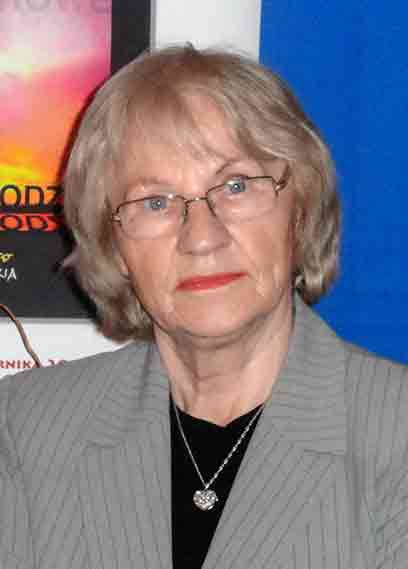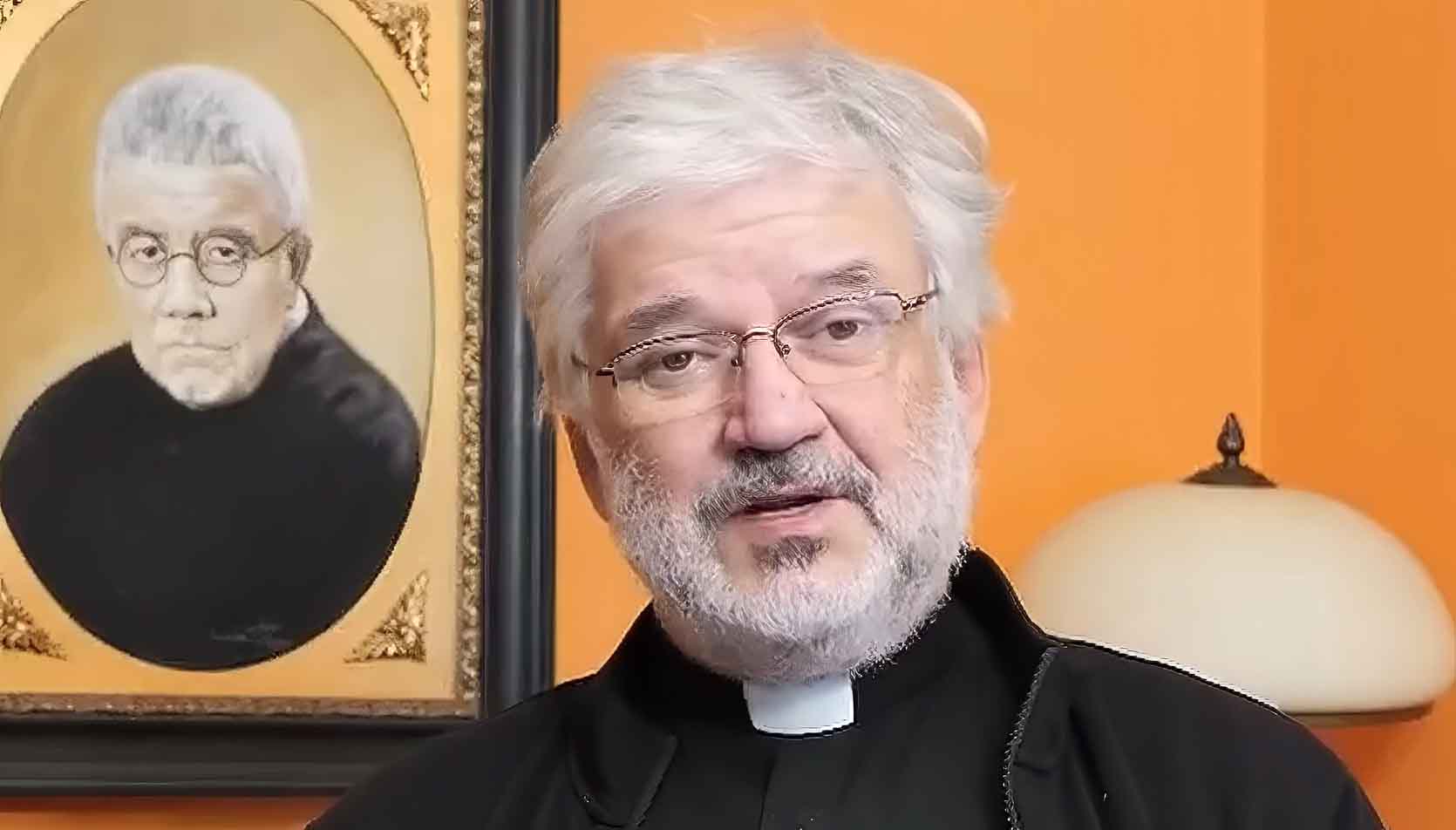On August 12th, another Great March for Life and Freedom of Poles and the Polish diaspora took place at the former German extermination camp of Auschwitz-Birkenau, in honor of the victims murdered there. The first day featured concerts, meetings and talks with historians, artists, and interesting people, as well as exhibitions and discussions on topics of interest, not just remembrance.
Of particular note was the Kresy meeting with Stanisław Srokowski, a witness to the genocide in the Kresy region, and Mr. Walczak, the mayor of the Jarocin commune, who spoke about the progress of work on the erection of the Volhynia Massacre monument by Andrzej Pityński. The march concluded on August 14th, the anniversary of the death of St. Maximilian Maria Kolbe, a Polish Franciscan friar and martyr of World War II, with a Mass at the Death Wall. Several thousand people from Poland and the Polish diaspora around the world participated in the march.
The cult of Saint Maximilian Maria Kolbe is gaining strength and may it expand in ever-widening circles, because no one, like him, deserves to be the patron of difficult times, our times.
Through Love to Holiness
Rajmund Kolbe, later Saint Maximilian Maria Kolbe, was born on January 8, 1894, in Zduńska Wola, a town in the Congress Kingdom of Poland, which was then still under the rule of the Russian Empire, the second of five sons of Juliusz Kolbe and Marianna née Dąbrowska. His parents were home weavers. They were devout Catholics and Polish patriots. They raised their children with discipline and piety. His father was involved in the underground resistance movement and often read patriotic books to his sons.
Influenced by the missions preached by the Franciscans in Lviv, Rajmund, his older brother Franciszek, and a year later, his younger brother Józef, joined the Franciscan Order and began their studies at a high school in Lviv.

Maksymilian Maria Kolbe [1894-1941] (Source: Auschwitz Museum/A. Wozniewicz)
Franciszek left the order in 1914 and joined the Legions to fight for Poland's freedom. He never returned to the order. In 1943, he was imprisoned in the Auschwitz concentration camp and perished in 1941. Father Juliusz Kolbe also fought as a Legionnaire. He likely died in a skirmish between Olkusz and Miechów in 1914.
In the fall of 1912, Rajmund went to Kraków for further studies. However, his superiors, recognizing his exceptional abilities, sent him to Rome, where he graduated with two doctorates: in philosophy and theology. On November 1, 1914, he professed his perpetual vows, taking the name Maria. Influenced by the widespread anti-Catholic activity he witnessed in Rome, after conferring with his brethren, he founded the Knights of the Immaculate Society. The aims of this society were evangelization, the deepening of a conscious and responsible Christian life, and the fight for the conversion of schismatics, heretics, and Freemasons.
In 1919, Maksymilian Maria Kolbe returned to Poland and began working at the Franciscan seminary in Kraków. To further the association's goals and maintain contact with its members, he began publishing a monthly, and later a weekly, "Rycerz Niepokalanej" (The Knight of the Immaculate). Maksymilian devoted himself to this program with complete zeal and remained faithful to it until his death.
He was a brilliant and imaginative organizer. He had plans for reforming the Franciscan monastery. He sought a location for his publishing house. On land donated to him by Prince Jan Drucki-Lubecki in 1927 in Teresin, near Warsaw, with the help of twenty "Knights of the Immaculate," including his brother Józef, he built a monastery, a monastic settlement, a publishing complex, and named it all Niepokalanów. In 1928, he established a Franciscan novitiate in Niepokalanów.
Applications for the novitiate sometimes exceeded a thousand, and he accepted only 100, as he set high standards for novitiate candidates. In 1930, he left the leadership of Niepokalanów to Brother Józef while he embarked on a missionary journey to Japan. Until 1935, he conducted activities similar to those in Niepokalanów (founding monasteries, building churches, and publishing) at the Nagasaki facility, gaining recognition from the Japanese government. In 1936, he returned to Niepokalanów and brought the center to a thriving state.
On September 1, 1939, the Second World War broke out. During the German occupation (1939-1945), the monastery's activities were suspended, and on September 19, 1939, Father Maksymilian, along with 37 members of the order, was arrested for the first time.
Arrested again on February 17, 1941, he was sent to Pawiak Prison, where, after torture and humiliation, his habit was taken away and he was ordered to don prisoner garb. On May 28, 1941, he was deported to Auschwitz along with 303 other prisoners. There, his striped uniform was marked with the number 16670. In the camp, he secretly served as a spiritual guide: he supported the prisoners' spirits, secretly celebrated Mass, heard confessions, and prayed with them.
On July 29, 1941, the prisoners of Block 10 were held a long roll call, during which 10 prisoners were selected for death by starvation as punishment for the escape of one of the prisoners in that block. Among those selected was Franciszek Gajowniczek, number 5659, who was deeply distressed that he would never see his wife and children again. Father Kolbe voluntarily replaced him and went to death row. When asked who he was, he replied that he was a Catholic priest. In his cell, he prayed for 12 days and supported the condemned prisoners.
He died on August 14, 1941, after being injected with phenol by a camp official. His body was cremated in the camp crematorium. A few weeks before his death, Maksymilian said to fellow prisoner Józef Stemler: "Hate is not a creative force. Love is a creative force." What greater proof of love for God and humanity is needed?
On October 25, 1944, Franciszek Gajowniczek was transferred to the Sachsenhausen concentration camp, where he was liberated by the American army. He died in 1995 at the age of 94. Maksymilian Maria Kolbe is known primarily for this heroic act that led to his sainthood. This extraordinary act is undoubtedly of immense importance to contemporary generations. It allows us to believe that in such extreme times of contempt, humanity can be saved, that one can avoid becoming a mere number.
His heroic stance was recognized by the Catholic Church. On October 17, 1971, Pope Paul VI personally solemnly beatified Father Maximilian. Eleven years later, on October 10, 1982, Pope John Paul II completed the work and canonized Maximilian Maria Kolba.
Patron for Difficult Times
We know much about Father Kolba's holiness, but less about his other qualities and contributions, which allow us to speak of him as a patron saint for the difficult times we live in. His extraordinary abilities were first recognized by a local pharmacist who helped him prepare for middle school. In middle school, Rajmund demonstrated outstanding abilities in mathematics and physics.
During his studies, he wrote an article entitled "Eteroplan" about an interplanetary vehicle, which he designed based on Newton's law of action and reaction, and in 1915 he submitted a sketch of the "Eteroplan" to the patent office, a device enabling space travel. It was a design for an interplanetary vehicle based on the principle of a three-stage launch vehicle.
Father Kolbe was a visionary, an efficient manager, and an organizer of work. He began construction of the monastery in 1927 with twenty brothers. On the eve of the outbreak of war, the Niepokalanów community numbered over 700 monks. At the time, the order was the largest in the world. It housed a seminary school and the world's only monastic fire department. In his pastoral work, Father Kolbe utilized the latest technological advancements, such as the media.
Niepokalanów was an undoubted example of publishing success. In January 1922, Father Kolbe began publishing the monthly (later weekly) "Rycerz Niepokalanej." He gave the monthly the character of a catechetical journal. The first edition had a circulation of 5,000 copies, reaching a million in 1939. In Niepokalanów, he also published, among other publications, "Rycerz Niepokalanej," and from 1935, "Mały Dziennik." Both publications addressed not only religious topics but also social, political, and cultural ones. Kolbe demonstrated that the clergy could, and even should, participate in community life. The Niepokalanów printing house also published monthly magazines for children, "Rycerzyk Niepokalanej" and "Mały Rycerzyk Niepokalanej", as well as "Biuletyn Misyjny", "Informator Rycerstwa Niepokalanej", "Echo Niepokalanowa" and Kalendarz Niepokalanej, which had a circulation of 440,000 copies in 1937.
From 1938, Niepokalanów had its own radio station, whose signal was the melody "Po gór, dolinyach" (In the Mountains, in the Valleys). Father Kolbe also considered television, the launch of an airport, and other technological innovations. He was able to adapt his work to needs and circumstances.
After his release from his first arrest, he immediately returned to Niepokalanów and arranged for approximately 3,000 places for displaced Poles from the Poznań region, including approximately 2,000 Jews.
Unable to publish any periodicals, he organized perpetual adoration of the Blessed Sacrament and opened workshops for the population: a forge, a sheet metal workshop, a bicycle and clock repair shop, a photography department, a tailoring and shoemaking shop, a sanitary department, and so on.
All of his activities coincided with the difficult period of the formation of the Second Polish Republic and during the war. He prayed out of love for Mary, the mother of Christ, and through her, he loved people and did everything to ensure that they, too, loved God and each other.
The modern world needs such moral models. Only such love can give hope, can save it.
Translation from Polish by Andrew Wozniewicz.











